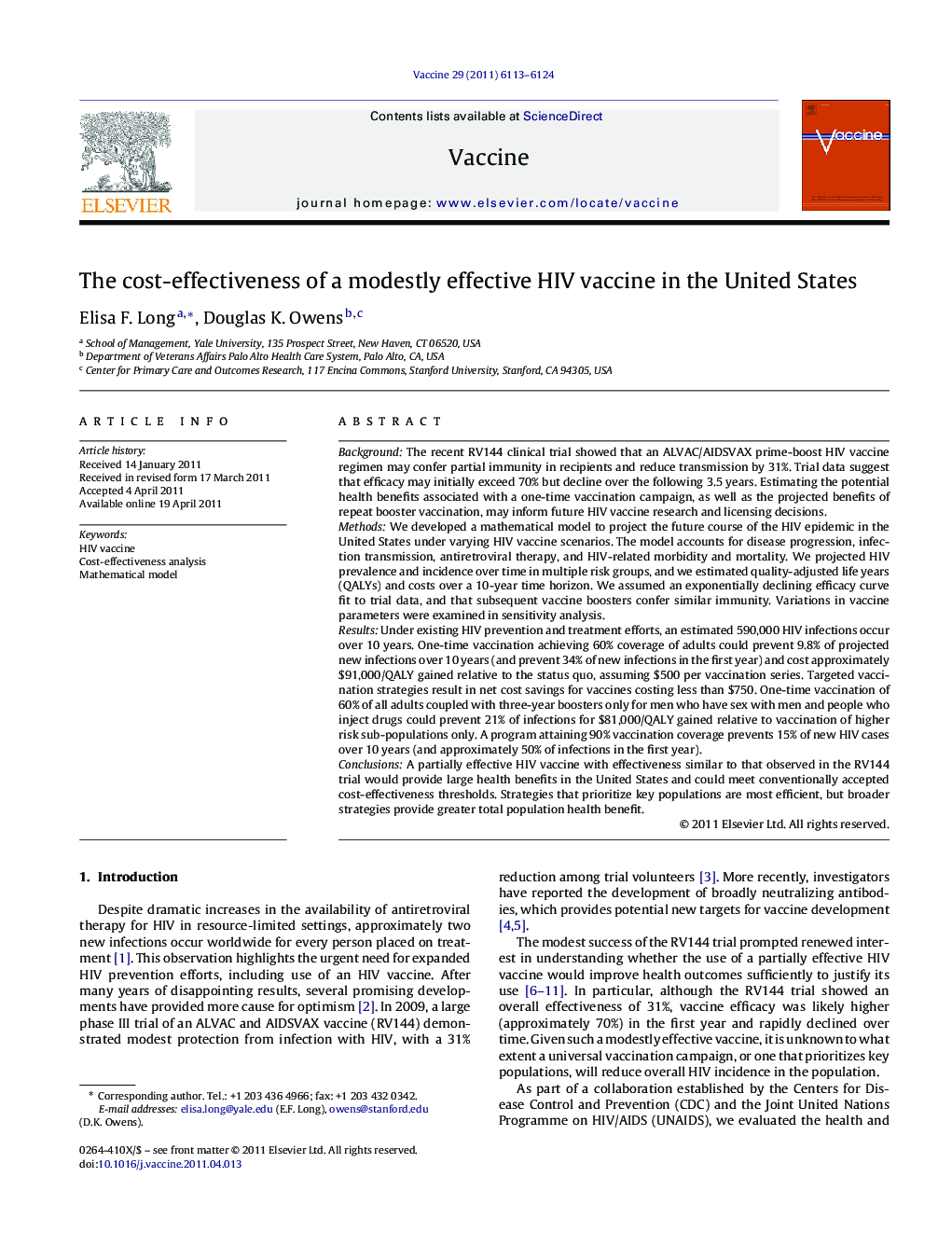| کد مقاله | کد نشریه | سال انتشار | مقاله انگلیسی | نسخه تمام متن |
|---|---|---|---|---|
| 2403553 | 1102915 | 2011 | 12 صفحه PDF | دانلود رایگان |

BackgroundThe recent RV144 clinical trial showed that an ALVAC/AIDSVAX prime-boost HIV vaccine regimen may confer partial immunity in recipients and reduce transmission by 31%. Trial data suggest that efficacy may initially exceed 70% but decline over the following 3.5 years. Estimating the potential health benefits associated with a one-time vaccination campaign, as well as the projected benefits of repeat booster vaccination, may inform future HIV vaccine research and licensing decisions.MethodsWe developed a mathematical model to project the future course of the HIV epidemic in the United States under varying HIV vaccine scenarios. The model accounts for disease progression, infection transmission, antiretroviral therapy, and HIV-related morbidity and mortality. We projected HIV prevalence and incidence over time in multiple risk groups, and we estimated quality-adjusted life years (QALYs) and costs over a 10-year time horizon. We assumed an exponentially declining efficacy curve fit to trial data, and that subsequent vaccine boosters confer similar immunity. Variations in vaccine parameters were examined in sensitivity analysis.ResultsUnder existing HIV prevention and treatment efforts, an estimated 590,000 HIV infections occur over 10 years. One-time vaccination achieving 60% coverage of adults could prevent 9.8% of projected new infections over 10 years (and prevent 34% of new infections in the first year) and cost approximately $91,000/QALY gained relative to the status quo, assuming $500 per vaccination series. Targeted vaccination strategies result in net cost savings for vaccines costing less than $750. One-time vaccination of 60% of all adults coupled with three-year boosters only for men who have sex with men and people who inject drugs could prevent 21% of infections for $81,000/QALY gained relative to vaccination of higher risk sub-populations only. A program attaining 90% vaccination coverage prevents 15% of new HIV cases over 10 years (and approximately 50% of infections in the first year).ConclusionsA partially effective HIV vaccine with effectiveness similar to that observed in the RV144 trial would provide large health benefits in the United States and could meet conventionally accepted cost-effectiveness thresholds. Strategies that prioritize key populations are most efficient, but broader strategies provide greater total population health benefit.
Journal: Vaccine - Volume 29, Issue 36, 18 August 2011, Pages 6113–6124